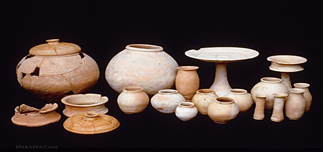Wondering about the title? Is it’s a new programming language? Is it new technology? According to a study, more than 50% of tech students are more interested in financial sector jobs than regular IT jobs. One of the key reasons is the requirement of less programming and more of a tech service knowledge. We often see many of our consanguine people are working for some bank or financial sectors and we intend to fascinate ourselves for those jobs. But we are confused as the current trend is leaning towards computer science, especially post COVID-19 world. So at ADAMAS UNIVERSITY, we merged them with your dream with the trend in our Bachelor of Computer Application Specialization in Banking, Financial Services, and Insurance domain. This is a unique course that feeds your tech-savvy part of the brain in-lining with your dream. With this course, you will be a strong challenger in the IT services market along with your specialty in FinTech.
Let’s see what FinTech has in arsenal for you:
Cybersecurity
The financial sector mostly operates on digital platforms and dome times cloud platforms. These financial applications grow on internal process and customer service, but as the day goes it also exposes many vulnerabilities and attracts many malicious cyber actors.
65 out of 100 cyberattacks target only financial sectors than any other institutes.
Cybercrime is always on the rise and finding new vulnerabilities as we speak. Cybersecurity institutes estimates that cybercrimes will increase 300% over coming five years only.
In this circumstances the demand for skilled cybersecurity professionals will always be touching the sky. The FinTech sector is in serious need of experts and specialists to develop security measures that prevent any malicious actions in consideration their business and client base.
Blockchain developer
Due to legalization of crypto currency and bitcoin in many parts of the world blockchain technology is growing with in the FinTech.
30% of FinTech companies expect to incorporate blockchain technologies into their strategy by 2020, according to PwC.
Although this distributed ledger technology was initially developed to account for the cryptocurrency Bitcoin, the FinTech sector has found other uses. For instance, one solution includes the elimination of business intermediaries to make transactions less costly, faster and more efficient. Some authorities also foresee its potential to provide more secure methods for records management.
As such, the demand for blockchain developers has grown rapidly.
The recent peak in cryptocurrency and blockchain interest continues to fuel job demand, as more companies require platforms and programs to improve efficiencies and speed-to-market.
Risk and compliance
FinTech emerged on the scene as an alternative hybrid solution to financial institutions. However, the lines have almost disappeared in recent years considering new developments.
There is a growing trend of FinTech businesses pursuing bank charters, and in turn, banks are nurturing relationships with FinTech companies to full fill consumer demand—a total transformation of both the FinTech and traditional financial services domain.
Both fields have been affected by new rules and regulations amid the evolution of technology. As a result, the risk of regulatory scrutiny and obligations have increased simultaneously, causing the need for compliance experts to rise.
In addition to compliance, risk control managers are also in demand. More financial companies need specialists to analyse, prevent and mitigate risks, including regulations, operations and crime.
Apps Developer
The FinTech apps market has seen spectacular growth over the last several years. Global app downloads and consumer spending have been hitting record levels, according to recent reports. The demand for mobile payment solutions and personal finance is only growing, as it is being driven by an appetite from younger generations of tech-savvy consumers.
Millennials also are more likely to use their increased ability to make payments securely on their phones.
Visa has reported more than 33% of users made a peer to peer digital payment over a mobile device, and 60% have sent money to family with a mobile device.
There will be a stronger need in future years for financial technology app developers to serve this booming market.
Financial Analyst
A financial analyst is responsible for managing budgets against incoming income forecasts. Depending upon the size of the firm, you could be an analyst for a single division or the entire company. Financial analysts assemble financial reports and do forecasts of incoming revenue, as well as run business studies. See full financial analyst salary outlook.
Financial analyst jobs in FinTech are in great demand as startups continue to grow.
These new financial services businesses need financial analysts with computer expertise to manage their revenue, but they also need tech-nerds to work with clients and develop tools to analyze the data.
Quantitative Analyst
‘Quants’ are the smart people who write the big, complex financial models. They are the ones behind the data-driving trading technology that large investment banks and hedge funds use to trade securities and analyse risk. As big data continues to rise, quants are becoming more important in FinTech to devise models that can sort through the massive amount of data and automate them so that trading can be a mostly automatic process.
Artificial intelligence
Digital transformation is a hot topic in the FinTech space, making technology adoption a top priority for organizations today.
The financial services industry flourishes on informed decision-making, from extending credit to consumers to evaluating risks.
In recent years, artificial intelligence (AI) and machine learning (ML) have helped businesses make fast and critical decisions with data and insight. Across the industry, organizations have turned to these technologies to transform their business through AML pattern detection, chatbots, risk management, fraud prevention, network security and investment predictions.
Data Specialist
Deloitte recently highlighted the important strategic role of data in a report with the World Economic Forum about trends affecting the financial services industry. Innovation that emerges will allow financial companies to have access to new sets of data, including social data, and allow new ways to understand markets and customers.
As clients are more empowered by the Internet and digital technologies, clients are becoming more proactive and want new financial services companies to give them more individual services tailored to their needs. So, there will be a need for data scientists, chief data officers, financial data analysts and data analytics managers needed to sift through information that can provide more insights into their markets.
Adamas University is taking all possible steps to make you FinTech ready through its advanced curriculum and highly skilled faculties.















